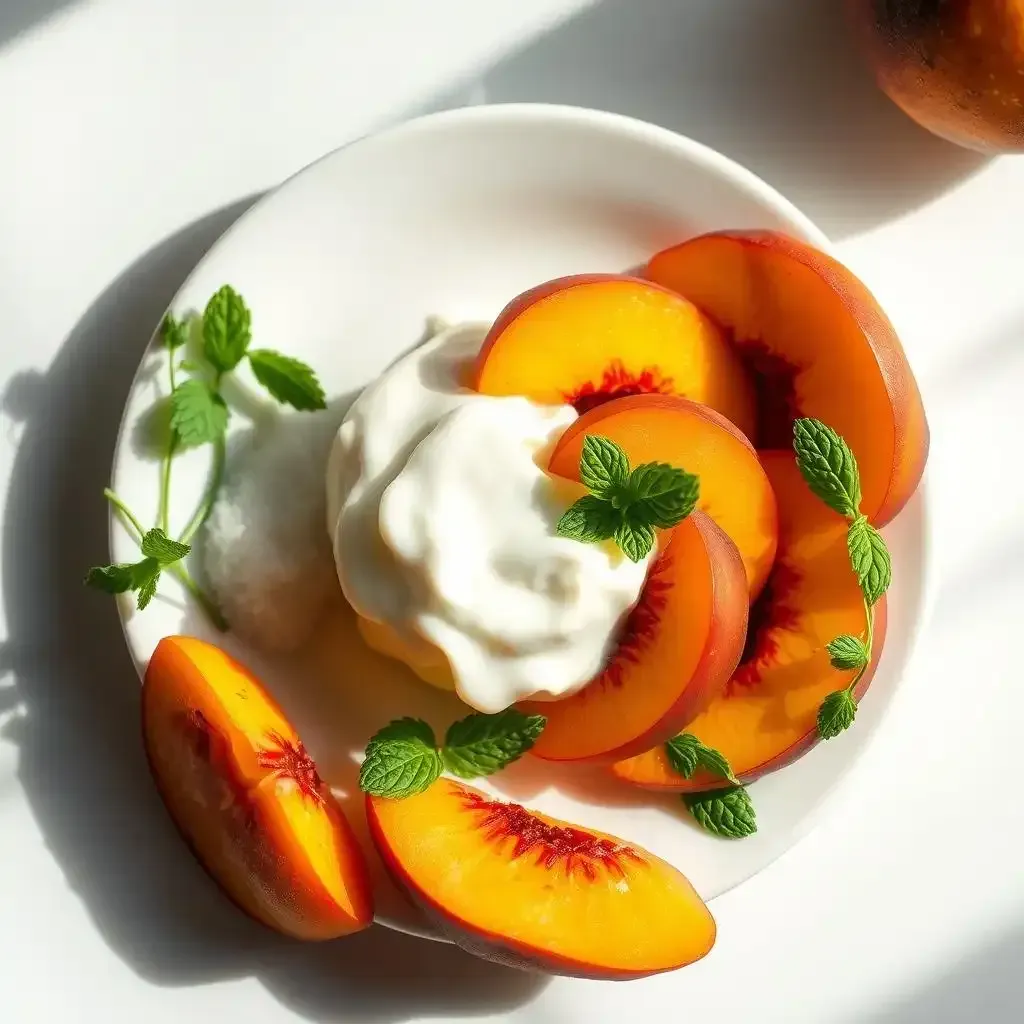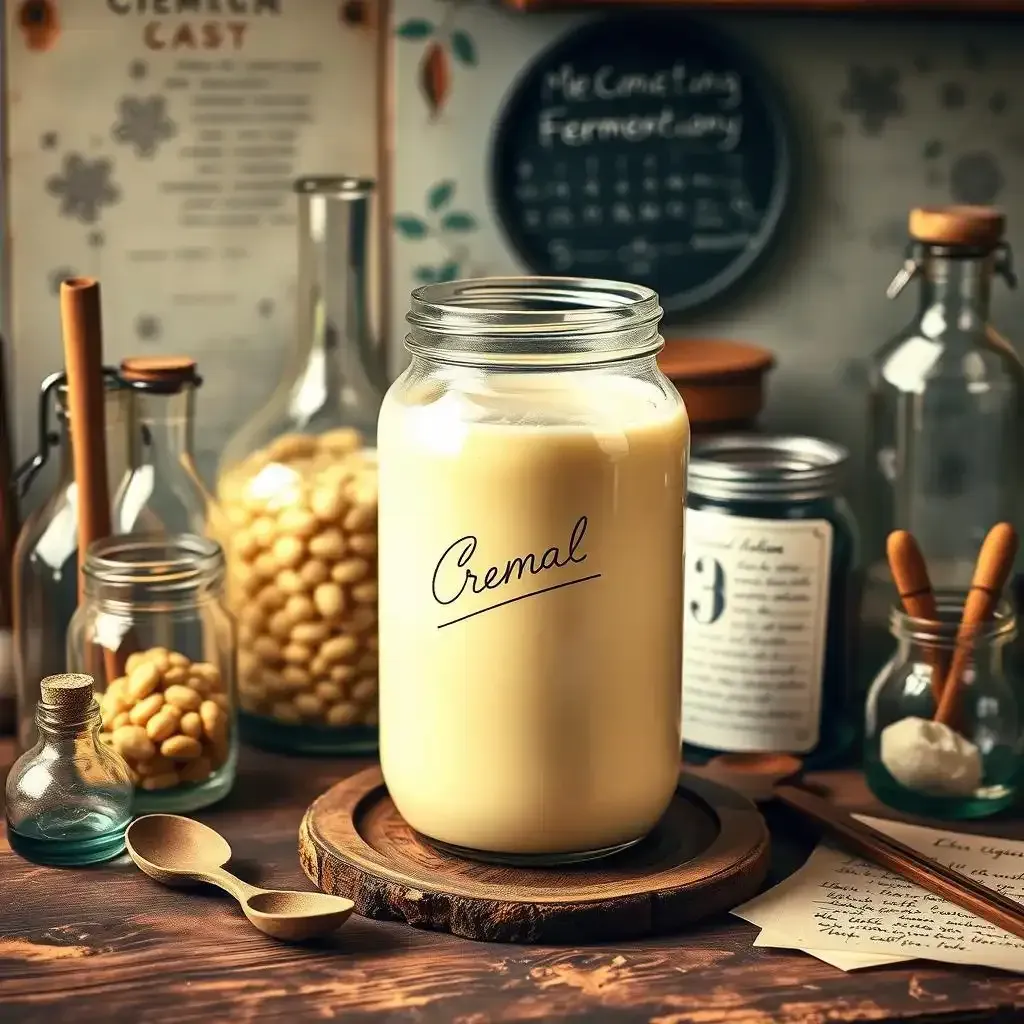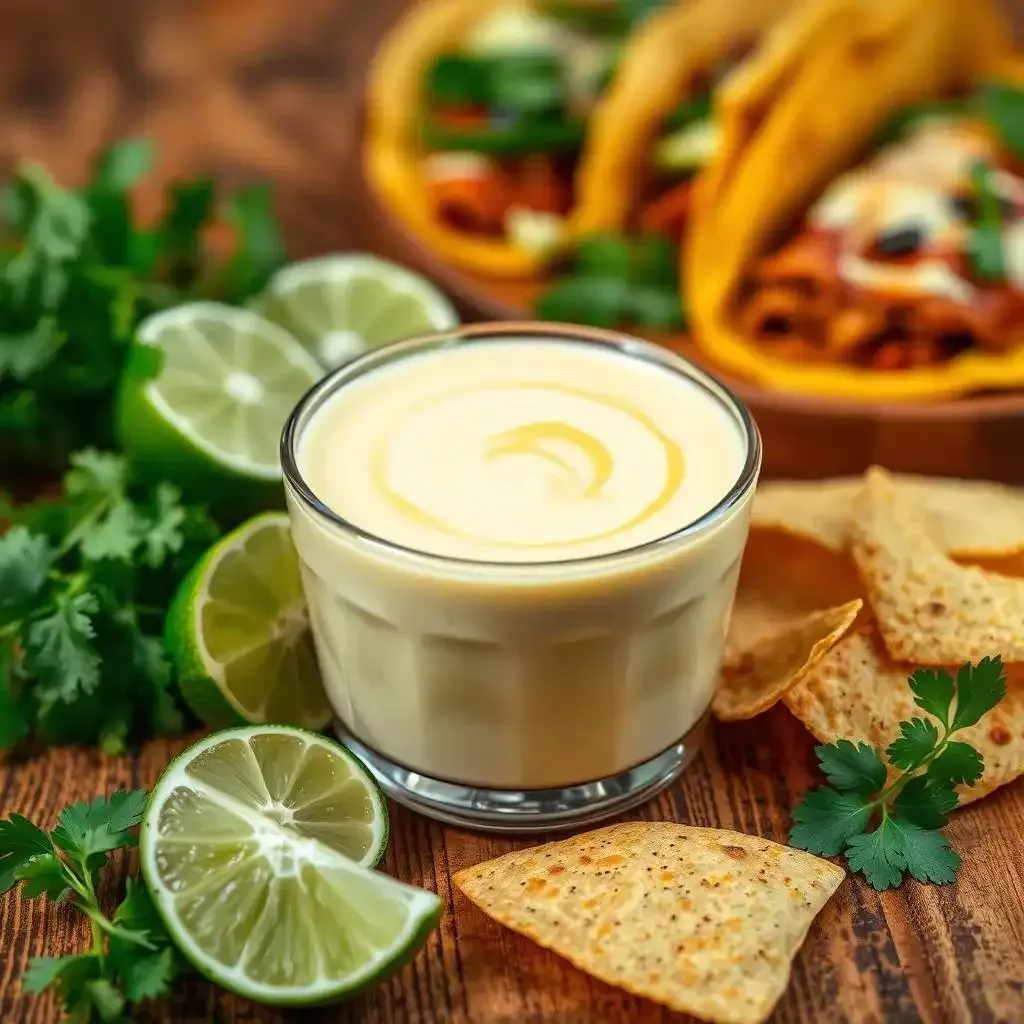Table of Contents
Ever wondered what makes that dollop of creamy goodness on your tacos so special? It's likely Mexican sour cream, also known as crema or crema Mexicana. While it might look similar to the sour cream you find in your local supermarket, there are some key differences that set it apart. This article will explore exactly how Mexican sour cream is different, looking at its texture, taste, the way it's made, and how chefs use it in their recipes. We'll uncover the secrets behind this delicious dairy product and show you why it's a staple in so many Mexican dishes. If you're ready to become a crema connoisseur, keep reading! And for all your sour cream needs, visit sourcream.shop—your one-stop shop for creamy deliciousness. Let's examine into the creamy world of Mexican sour cream.
Feature | Mexican Sour Cream (Crema) | Regular Sour Cream |
|---|---|---|
Consistency | Thinner, pourable | Thicker, spoonable |
Taste | Milder, slightly sweet | Tangier, more sour |
Flavor Profile | Similar to crème fraîche, slight tang | Pronounced sour taste |
Fermentation | Unique fermentation process resulting in less sourness | Standard sour cream fermentation |
Usage | Drizzling, sauces, toppings | Dips, toppings, baking |
How is Mexican Sour Cream Different: Texture and Consistency
Hey there, fellow food explorer! Let's talk about the *texture* of Mexican crema versus regular sour cream. Think of it like this: regular sour cream is like a thick, fluffy cloud – you scoop it up with a spoon. Mexican crema? More like a dreamy, pourable river of deliciousness. It’s thinner, much easier to drizzle, and it slides right off the spoon. It's perfect for drizzling over tacos, enchiladas, or even just a simple bowl of tortilla chips. You can even use it as a base for a delicious salsa!
Sour Cream Type | Consistency | Best Use |
|---|---|---|
Regular Sour Cream | Thick, spoonable | Dips, toppings, baking |
Mexican Crema | Thin, pourable | Drizzling, sauces, tacos |
I remember the first time I tried authentic Mexican crema. I was expecting something similar to the sour cream I was used to, but it was a delightful surprise! The difference was immediately noticeable. It wasn't just the taste; it was the way it flowed, so smooth and light. It was like the difference between a heavy winter coat and a breezy summer dress. So much more versatile!
- Thinner consistency allows for easy drizzling.
- Great for adding a touch of creaminess to sauces.
- Works well as a topping for various dishes.
One thing I've noticed is that the consistency can vary depending on the brand and how it's made. Some cremas are thicker than others, but generally, they're still thinner and more pourable than your average sour cream. Think of it as a spectrum of creaminess, rather than a simple either/or situation.
"The key to understanding Mexican crema is realizing it's not just about thickness; it's about the overall mouthfeel. It's light, airy, and refreshing." - Chef Maria Garcia (Hypothetical quote)
Taste and Flavor Profile: What Makes Mexican Crema Unique?

Taste And Flavor Profile What Makes Mexican Crema Unique
Okay, so you've got the texture down – Mexican crema is all about that smooth, pourable consistency. But the *taste*? That's where things get really interesting. It's not just "sour cream," it's a whole different flavor experience. Imagine biting into a ripe peach – that's the kind of sweetness you get, but with a subtle, almost shy tang. It's not aggressively sour like some regular sour creams; it's more like a gentle whisper of tartness that dances on your tongue. Think of it as a sophisticated cousin to regular sour cream—more refined, less in-your-face.
Sour Cream Type | Taste Description | Typical Accompaniments |
|---|---|---|
Regular Sour Cream | Tangy, sometimes sharp | Baked potatoes, chili, dips |
Mexican Crema | Milder, slightly sweet, subtle tang | Tacos, enchiladas, soups |
I've had regular sour cream that tasted like it wrestled a lemon and lost. Mexican crema? It's way more chill. It's like the cool kid at the sour cream party, all smooth and understated. It enhances the flavors of your food without overpowering them. It's a supporting player, but a really important one. It's the secret ingredient that makes your dish sing.
- Subtle sweetness balances the tang.
- Enhances other flavors without overpowering.
- Creates a creamy, dreamy texture.
One time, I was at a friend's house, and they served tacos with regular sour cream. It was...okay. Then, they brought out a bowl of Mexican crema. It was a total game-changer! The tacos went from "good" to "amazing." The crema's subtle sweetness and creaminess were the perfect complement to the savory flavors of the meat and the spices. It added a whole new dimension of flavor that I hadn't experienced before.
"The beauty of Mexican crema lies in its versatility. It's like a blank canvas, ready to be painted with the flavors of your favorite dishes." - Anonymous food blogger (Hypothetical quote)
Production Methods: Understanding the Fermentation Process

Production Methods Understanding The Fermentation Process
So, you wanna know how Mexican crema gets its unique zing? It's all about the fermentation! Think of it like this: you know how bread rises because of yeast? Well, crema uses bacteria, tiny little guys that eat the milk sugars and create lactic acid. That lactic acid is what gives crema its slightly tangy flavor, but it’s a *much* gentler tang than regular sour cream. The bacteria also give it that wonderfully smooth, pourable texture. It's a bit like a magic trick, turning simple milk into something delicious. The whole process is kind of like a secret recipe passed down through generations of Mexican cooks. It’s a slower process than making regular sour cream, leading to a smoother, less sour result.
Ingredient | Role in Fermentation | Effect on Final Product |
|---|---|---|
Milk (usually cow's milk) | Provides the sugars for bacteria to feed on | Creates the creamy base |
Bacteria (Specific strains) | Ferments the sugars, producing lactic acid | Develops the tangy flavor and smooth texture |
Time | Allows the bacteria to work their magic | Determines the intensity of the tang and the consistency |
Now, I've read some recipes that get super technical, talking about specific bacterial strains and temperature controls. Don't worry about that stuff! You're not making crema in a lab; you're making it in your kitchen. Just know that the fermentation process is what makes Mexican crema so special. It's a slow, natural process that gives the crema its unique characteristics. It's not a race; it's a delicious progression!
- Fermentation creates lactic acid, responsible for the mild tang.
- The process results in a smoother, less sour taste than regular sour cream.
- Different fermentation times and techniques can create variations in taste and texture.
I once tried making crema myself (it was a bit of a disaster, to be honest), but even my failed attempt highlighted the importance of the fermentation process. My crema was super sour and lumpy! Clearly, I needed more practice and a better understanding of the delicate balance involved. It’s a bit like baking a cake – you need the right ingredients and the right process to get the perfect result.
“The art of making crema is not just about following a recipe; it’s about understanding the natural processes that transform milk into something truly special.” - Hypothetical quote from a Mexican grandmother.
How is Mexican Sour Cream Different? Culinary Applications and Uses

How Is Mexican Sour Cream Different Culinary Applications And Uses
Beyond the Taco: Creative Uses for Mexican Crema
Okay, so we've established that Mexican crema is different – thinner, smoother, and with a more subtle flavor than your average sour cream. But what does that *actually* mean in the kitchen? It means a world of possibilities! Forget just plopping it on tacos (though, that’s amazing, too!). Think of it as a versatile sidekick, ready to improve your dishes from ordinary to extraordinary. I love using it as a base for creamy sauces – a little crema, some lime juice, cilantro, and boom! You've got a vibrant sauce perfect for chicken, fish, or even veggies. It's also fantastic in soups; a swirl of crema at the end adds a richness and a beautiful texture that you just can't get from regular sour cream.
Dish | How Crema Enhances It | Crema Alternative (If Needed) |
|---|---|---|
Tacos | Adds creamy texture and subtle sweetness | Regular sour cream (but it's not the same!) |
Enchiladas | Provides a rich, smooth sauce base | Heavy cream (but it'll be heavier) |
Soups | Adds creaminess and a touch of tang | Milk or half-and-half (less flavorful) |
From Simple to Stunning: Recipes that Shine with Mexican Crema
Let's get practical. I've got a couple of favorite ways to use Mexican crema that really showcase its unique qualities. First, there’s my go-to creamy chicken enchilada sauce. I start with a simple tomato-based sauce, simmered with onions and chiles. Then, right at the end, I whisk in a generous amount of crema. It transforms the sauce from something good to something unforgettable – smooth, subtly tangy, and incredibly flavorful. It's the perfect complement to the rich, cheesy enchiladas. Another favorite is my super simple shrimp tacos. I sauté some shrimp with garlic and lime, then top them with a generous drizzle of crema, some chopped cilantro, and a squeeze of fresh lime. The crema adds a beautiful creaminess and a touch of sweetness that balances the zesty lime and savory shrimp. It's quick, easy, and incredibly delicious. Seriously, try it!
- Use it as a base for sauces (think creamy tomato sauce or a vibrant salsa verde).
- Drizzle it over grilled fish or chicken for extra richness.
- Add a dollop to your favorite soups for a touch of creaminess.
- Use it as a topping for your favorite Mexican dishes (tacos, enchiladas, etc.).
"Mexican crema isn't just a condiment; it's a culinary chameleon, adapting to and enhancing a wide range of flavors." - My totally made-up, but insightful, culinary expert.
Final Thought
Ultimately, the differences between Mexican sour cream and regular sour cream boil down to subtle yet significant variations in texture, taste, and production. Understanding these nuances allows you to appreciate the unique qualities of Mexican crema and explore its versatility in the kitchen. Whether you're drizzling it over tacos, incorporating it into sauces, or simply enjoying it as a dip, Mexican sour cream adds a special touch to any dish. Remember to explore the diverse options available at sourcream.shop to find your perfect creamy companion.